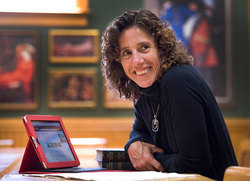
Magazines and newspapers are full of stories about aging boomers who are aggressively taking charge of their health and the aging process, acting as if this is something new. Not surprising, as the boomers’ mantra is “It’s all about me.” (Boomers, don’t e-mail me complaining about this description. First of all, I am one, and, second, if Wikipedia says it, it must be true.)
But it’s NOT new, according to Lynn Botelho, professor of History and the 2011-2012 University Professor.
“People have this perception that this generation of seniors is the first to really ‘fight back’ against aging, and that seniors in the sixteenth, seventeenth, eighteenth, and early nineteenth centuries would ‘go gentle into that good night’ that was old age,” Botelho said.
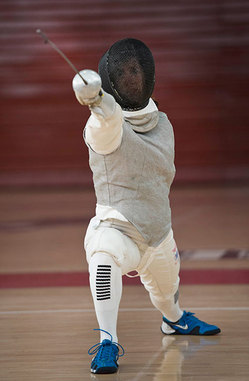
“That is simply not the case. Geriatric medicine began in the 1700s, not in the nineteenth century, as many people believe. Seniors in the 1500s were well aware of the benefits of moderating their diet, exercising, and special medicinal treatments to address issues related to aging.”
Botelho is a historian of old age and the aging body in early modern England and Europe. Her current work, being completed as part of her role as IUP’s University Professor, is a five-part book, The Aging Body, the first wide-ranging study on old age in Europe in the 1700s.
It might be because I’m just a little south of thirty now (okay, maybe more than a little), but this work makes me feel just a little better about my own efforts to age gracefully.
I’m also totally intrigued by Botelho’s other passion: fencing. And not just working out with the IUP Fencing Club (she has been its advisor for many years). I’m talking WORLD CHAMPIONSHIPS.
Botelho is a competitive fencer, in both foil and épée. She won two national titles at the July 2011 United States Fencing championship: an individual Veteran Woman (40-9) national championship and a gold medal as part of the Women’s Veteran Team.
“Fencing is a very physical activity, but it’s also about how well you think under pressure, so it’s a good fit with the life of an academic,” Botelho said.
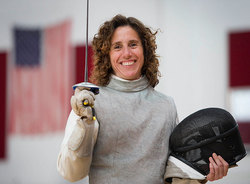
And she knows something about the academic life. Botelho has published seven books and thirteen articles or essays on the subject of the history of aging. She serves in several international executive positions in the field of British studies, including as president of the North American Conference on British Studies. She has degrees from the University of Oregon and Oxford and holds a Ph.D. from the University of Cambridge. She also is a life fellow of Clare Hall, Cambridge.
IUP’s University Professor award, a lifetime title, recognizes a faculty member who demonstrates an outstanding record of teaching, research, and scholarly activity and service.
I am very excited that Botelho will be the first IUP professor to be featured on a new television show on WTAJ-TV called “Central PA Live.” She will be a guest on the Wednesday, September 14, show, which airs from 4:00 to 5:00 p.m. on Comcast cable channel 193. And, there’s another IUP connection: The host for the show is a 1979 IUP Journalism graduate, Dawn Pellas.
This week, Botelho will be talking about aging, but she’s already been invited back to do another segment, teaching show host Pellas how to fence! I’ll definitely be tuning in to both shows!
 Over morning coffee, NPR listeners recently learned about eating habits that were discovered right here in Indiana, Pennsylvania. You can see the full story in The Salt, NPR’s food blog, which describes research by two former students and two faculty members. It suggests the gender of your dining company can influence what you eat.
Over morning coffee, NPR listeners recently learned about eating habits that were discovered right here in Indiana, Pennsylvania. You can see the full story in The Salt, NPR’s food blog, which describes research by two former students and two faculty members. It suggests the gender of your dining company can influence what you eat.
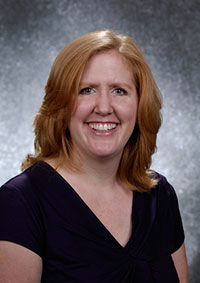 Criminology professor
Criminology professor 
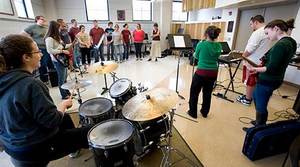
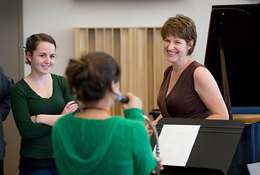

 I know what I think, but I’m more interested in what our faculty experts have to say about current issues.
I know what I think, but I’m more interested in what our faculty experts have to say about current issues. 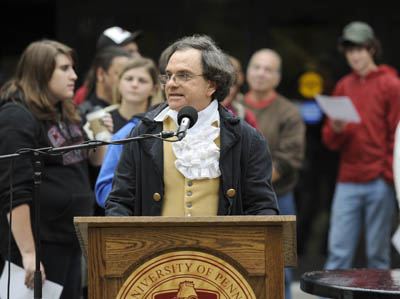
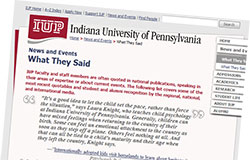

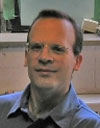 Dr. Nealen says that songbirds learn to vocalize or sing in a way that matches how humans learn to speak–by hearing themselves practice. In humans, hearing our own speech helps us to produce normal speech. Just ask any parent about that–it’s what we do to help our babies learn to talk.
Dr. Nealen says that songbirds learn to vocalize or sing in a way that matches how humans learn to speak–by hearing themselves practice. In humans, hearing our own speech helps us to produce normal speech. Just ask any parent about that–it’s what we do to help our babies learn to talk.

